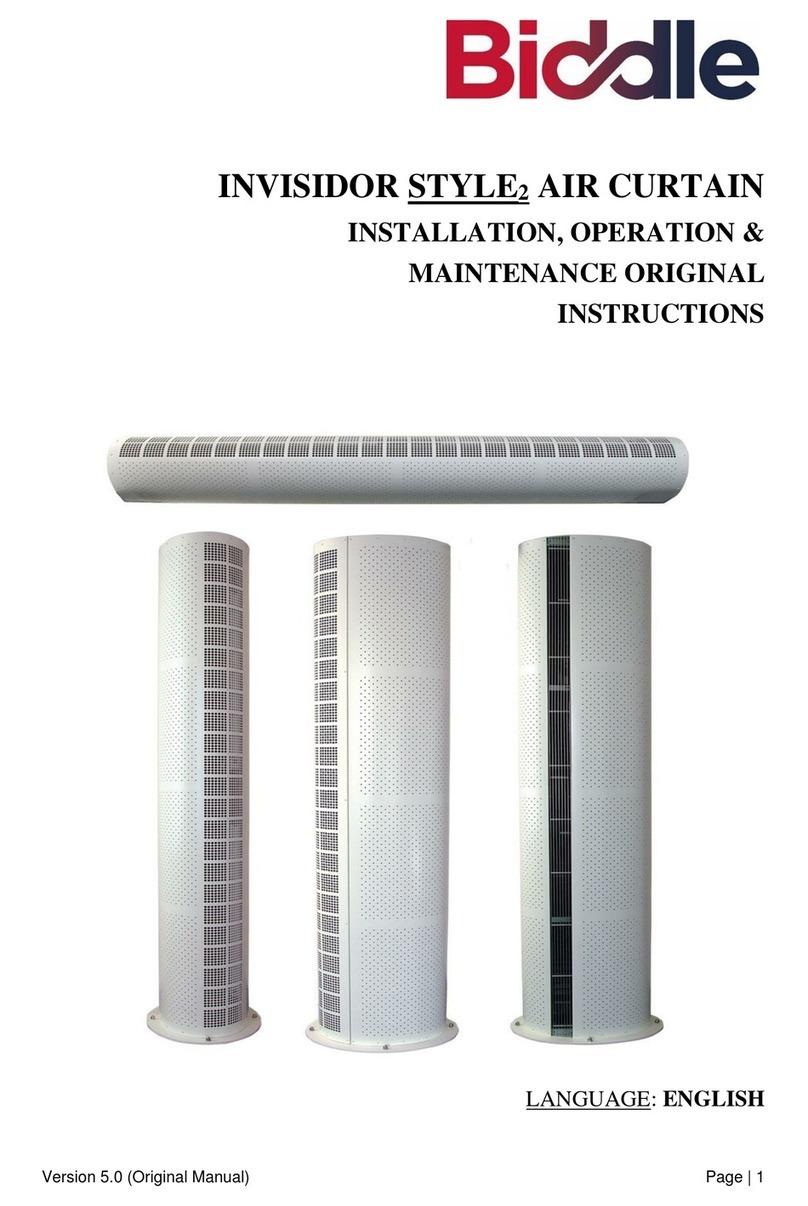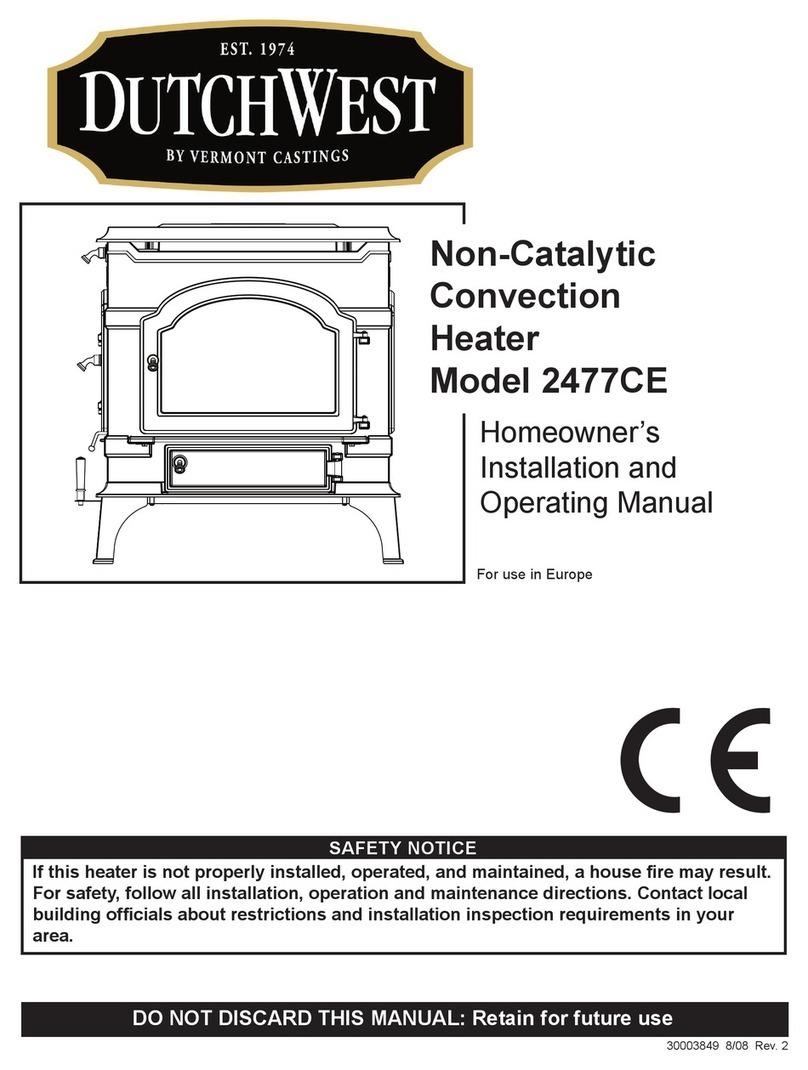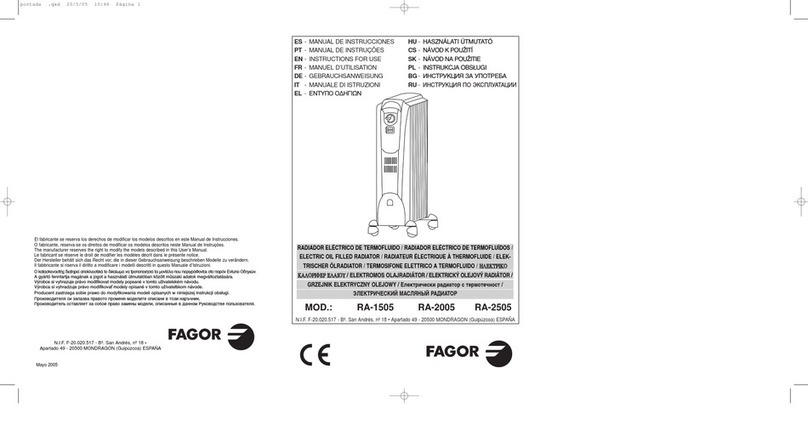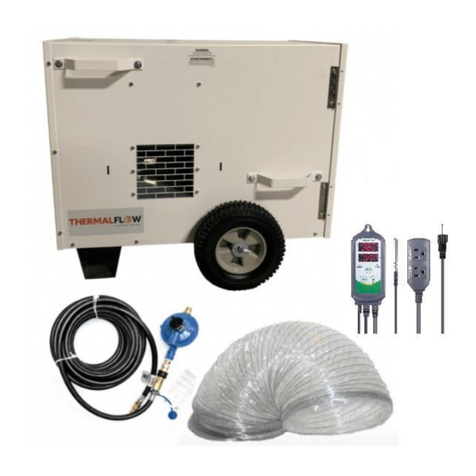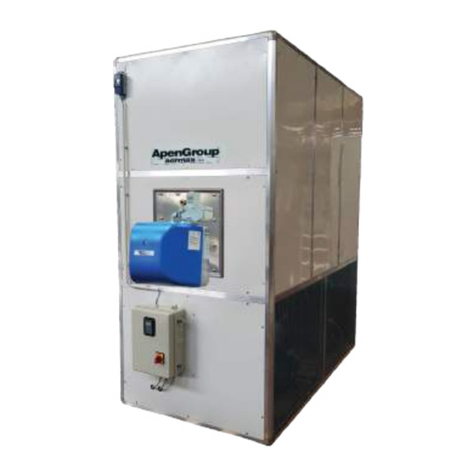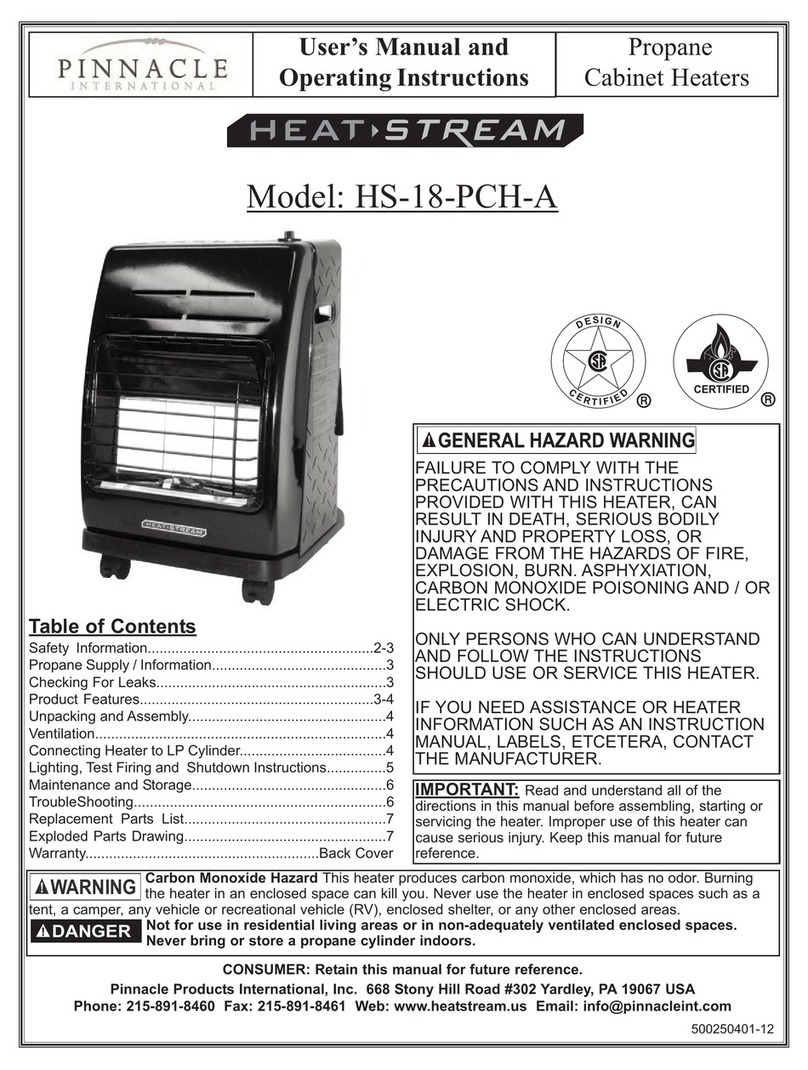
© 2012, Pinnacle Products International, Inc. 3Propane Forced Air User’s Manual
Safety Information (continued)
This is a direct-fired, forced-air construction heater for either
indoor or outdoor use. It's intended use is primarily for the
temporary heating of buildings under construction, alteration or
repair. All of the products of combustion generated by this heater
are forced through the heater and released into the area being
heated. This heater operates at approximately 98%+ combustion
efficiency, but still produces small amounts of carbon monoxide.
Humans can tolerate small amounts of carbon monoxide for short
periods. Carbon monoxide can build up in a heated space, and
failure to provide adequate ventilation could result in poisoning or
death.
You must provide the propane gas and cylinder(s). Use this
heater only with a propane vapor withdrawal supply system.
Refer to Chapter 5 of the Standard for Storage and Handling of
Liquefied Petroleum Gas , ANSI/NFPA 58. Your local library or
fire department will have this booklet.
- Children should be kept away.
- Always maintain proper clearance from combustible materials.
Minimum clearance should be:
Sides - 24” Top - 36” Front - 72”
- Do not store or use gasoline or other flammable vapors and
liquids in the vicinity of this or any other appliance.
- An LP cylinder not connected for use shall not be stored in the
vicinity of this or any other appliance.
- Heater must be placed on level and solid footing.
- Never place anything, including clothes or other flammable items
on heater.
- Do not modify heater, or operate a heater that has been
modified.
- Adequate clearance for accessibility, combustion and ventilation
(air supply) must be maintained at all times when heater is oper-
ating.
- Service and repair should be performed by a qualified service
person. The heater should be inspected before each use, and at
least annually by a qualified person. More frequent cleaning may
be required as necessary. Do not service heater while hot or
operating.
- Never connect heater to an unregulated gas supply.
- This heater is equipped with a 3-prong (grounding) plug for your
protection against shock hazard and should be plugged directly
into a properly grounded three-prong receptacle.
- Use only the electrical/power cord specified. Electrical and
grounding connection must comply with National Electrical
Code - ANSI/NFPA 70 (USA) and CSA C22.1 Canadian
Electrical Code, Part 1 (Canada).
- To prevent injury, always wear gloves when handling heater.
Never handle an operating or hot heater, as severe burns may
result.
- Use heater in accordance with all local codes. In the absence
of local codes, refer to The National Fuel Code, ANSI Z223.1.
- This heater is shipped from the factory for use with LP (propane)
gas only. Do not convert to any other gas. Installation must
conform to local codes, or in their absence, with the standard for
the Storage and Handling of Liquefied Petroleum Gases
ANSI/NFPA 58 and the Natural Gas and Propane Installation
Code 149.1.
- Use only the regulator and hose assembly provided with this
heater. Inspect the regulator/hose assembly prior to each use of
the heater. If there is excessive abrasion or wear, or if the hose
is cut, replace it with the proper assembly shown in the parts list,
prior to using the heater.
- Gas supply connections should be checked by using a 50/50
soap and water solution. Never use a flame to check for gas
leaks.
- Locate LP cylinder at least 6 feet (10 ft. in Canada) from the
heater, and do not direct heater discharge towards the
LP cylinder unless it is at least 20 feet from the heater.
- The electrical connection and grounding must comply with the
National Electrical Code, ANSI/NFPA 70 and CSA C22.1
Canadian Electrical Code, Part 1 (Canada) Canadian Electrical
Code, Part 1. Use only a properly grounded three (3) prong
receptacle.
- Do not restrict air inlet or outlet areas of the heater.
1. Remove all packing items applied to heater for shipment. Keep
plastic cover caps attached to inlet connector and
hose/regulator assembly for storage.
2. Remove all items from carton.
3. Check all items for shipping damage. If heater is damaged,
promptly inform dealer where you purchased the heater.
The Propane (LP) gas pressure regulator
and hose assembly supplied with the
heater must be used without alteration.
Unpacking
CAUTION
The hose assembly shall be protected
from traffic, building material and contact
with hot surfaces both during use and while in storage.
WARNING
Not for use with ductwork.
WARNING
NEVER LEAVE HEATER UNATTENDED
WHILE BURNING, CONNECTED TO A
POWER SOURCE, OR WHILE
CONNECTED TO A FUEL SOURCE
Minimum and Maximum inlet Pressure
40 60V 125V 150V
Min. 5 PSI
Max. Bottle Pressure





